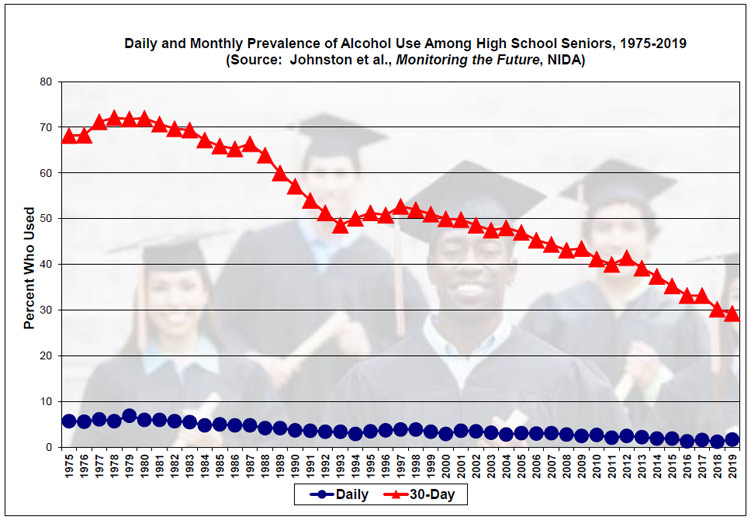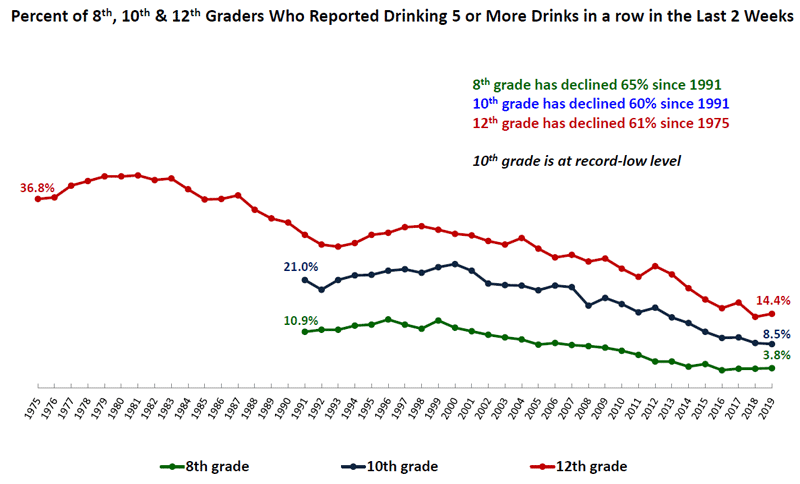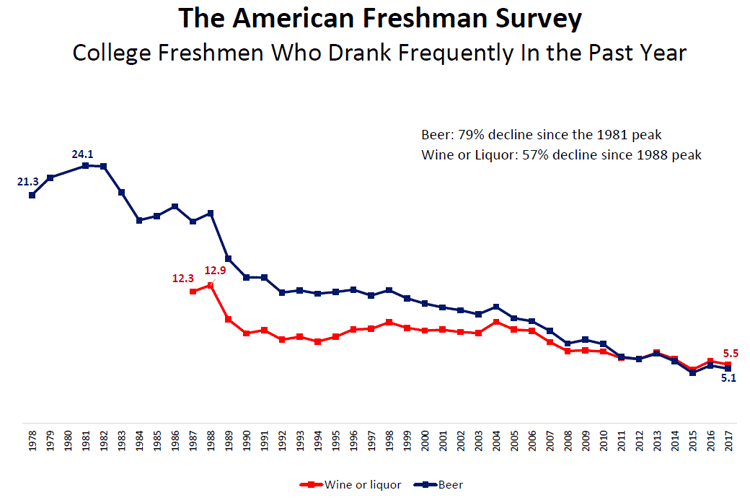Epidemiology of Alcohol Use and Alcohol-Related Problems
Part 3. Longitudinal Trends
Long-term Decline in Alcohol Use
The Monitoring the Future (MTF) project has been collecting prevalence data on alcohol and drug use among high-school seniors since 1975, thereby providing a unique resource for longitudinal analysis of trends in rates of alcohol and drug problems. Despite growing concerns in the media about "binge drinking" and other drinking problems among adolescents and college students, epidemiological evidence from the MTF project and other long-term surveys indicates that alcohol use and heavy drinking have been on the decline in these populations for a number of years. As shown in the following graph, the thirty-day prevalence of alcohol use reached a peak of over 70 percent of high school seniors in the late 1970s and, then, went into a steady decline until the early 1990s. During the new millenium, the monthly prevalence of alcohol use has continued to decline, reaching an all-time low of 29.3 percent in 2019. This graph also shows that annual estimates of daily drinking among high-school seniors, which peaked at 6.9 percent in 1979, have declined over the past four decades to only 1.7 percent in 2019. Clearly, this problematic form of frequent drinking, like alcohol use in general, is less common among adolescents today than it was 45 years ago.

Downward Trends in Heavy Alcohol Use
A similar picture emerges in the next graph, which shows longitudinal trends from 1975 to 2019 in so-called "binge" drinking —having 5 or more drinks in a row in the previous two weeks—for high school seniors, tenth graders, and eighth graders in the expanded MTF survey. Like thirty-day prevalence of alcohol use and the use of most illegal substances, heavy drinking reached a peak among high seniors in the late 1970s and early 1980s before trending downward until the early 1990s. Heavy drinking has generally declined for all three grade levels throughout the late 1990s and the first two decades of the 21st century. Thus, there is no evidence here of recent increases in heavy or "binge" drinking among adolescents.

College Drinking Has Also Decreased
There is little evidence of increases in alcohol use or deviant drinking among college students in recent decades. To the contrary, an annual survey of first-year college students known as The American Freshman Survey conducted by the Higher Education Research Institute (HERI) has recorded a steady decline since 1981 in the percentage of freshmen who drink beer, wine or liquor frequently. The graph below, which depicts the declining longitudinal trend in "frequent" drinking among college freshmen, is adapted from a website sponsored by the brewers of Budweiser and other popular brands of beer, the Anheuser-Busch Companies: http://www.alcoholstats.com. In particular, the percentage of frequent beer drinkers has declined dramatically from a peak of 24.1% in 1981 to only 5.1% of freshmen in 2017. If you want to see additional results from this survey of first-year college students, more information is available at the HERI website: https://www.heri.ucla.edu/monographs/TheAmericanFreshman2017.pdf
